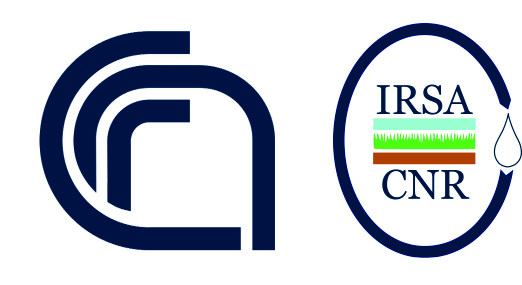| Title | Six artificial recharge pilot replicates to gain insight into water quality enhancement processes |
| Abstract | The processes that control water quality improvement during artificial recharge (filtering, degradation, and adsorption) can be enhanced by adding a reactive barrier containing different types of sorption sites and promoting diverse redox states along the flow path, which increases the range of pollutants degraded. While this option looks attractive for renaturazing reclaimed water, three issues have to be analyzed prior to broad scale application: (1) a fair comparison between the system with and without reactive barrier; (2) the role of plants in prevention of clogging and addition of organic carbon; and (3) the removal of pathogens. Here, we describe a pilot installation built to address these issues within a waste water treatment plant that feeds on water reclaimed from the secondary outflow. The installation consists of six systems of recharge basin and aquifer with some variations in the design of the reactive barrier and the heterogeneity of the aquifer. We report preliminary results after one year of operation. We find that (1) the systems are efficient in obtaining a broad range of redox conditions (at least iron and manganese reducing), (2) contaminants of emerging concern are significantly removed (around 80% removal, but very sensitive to the compound), (3) pathogen indicators (E. coli and Enterococci) drop by some 3-5 log units, and (4) the recharge systems maintained infiltration capacity after one year of operation (only the system without plants and the one without reactive barrier displayed some clogging). Overall, the reactive barrier enhances somewhat the performance of the system, but the gain is not dramatic, which suggests that barrier composition needs to be improved. (C) 2019 The Authors. Published by Elsevier Ltd. |
| Source | Chemosphere 240 |
| Keywords | Soil aquifer treatmentReactive barriersRedoxContaminants of emerging concernPathogensManaged aquifer recharge |
| Journal | Chemosphere |
| Editor | Elsevier, Oxford, Regno Unito |
| Year | 2019 |
| Type | Articolo in rivista |
| DOI | 10.1016/j.chemosphere.2019.124826 |
| Authors | Valhondo, Cristina; Martinez-Landa, Lurdes; Carrera, Jesus; Diaz-Cruz, Silvia M.; Amalfitano, Stefano; Levantesi, Caterina |
| Text | 416628 2019 10.1016/j.chemosphere.2019.124826 ISI Web of Science WOS 000497600800129 Scopus 2 s2.0 85072575963 Soil aquifer treatment Reactive barriers Redox Contaminants of emerging concern Pathogens Managed aquifer recharge Six artificial recharge pilot replicates to gain insight into water quality enhancement processes Valhondo, Cristina; Martinez Landa, Lurdes; Carrera, Jesus; Diaz Cruz, Silvia M.; Amalfitano, Stefano; Levantesi, Caterina CSIC; UPC; Univ Politecn Cataluna; CNR The processes that control water quality improvement during artificial recharge filtering, degradation, and adsorption can be enhanced by adding a reactive barrier containing different types of sorption sites and promoting diverse redox states along the flow path, which increases the range of pollutants degraded. While this option looks attractive for renaturazing reclaimed water, three issues have to be analyzed prior to broad scale application 1 a fair comparison between the system with and without reactive barrier; 2 the role of plants in prevention of clogging and addition of organic carbon; and 3 the removal of pathogens. Here, we describe a pilot installation built to address these issues within a waste water treatment plant that feeds on water reclaimed from the secondary outflow. The installation consists of six systems of recharge basin and aquifer with some variations in the design of the reactive barrier and the heterogeneity of the aquifer. We report preliminary results after one year of operation. We find that 1 the systems are efficient in obtaining a broad range of redox conditions at least iron and manganese reducing , 2 contaminants of emerging concern are significantly removed around 80% removal, but very sensitive to the compound , 3 pathogen indicators E. coli and Enterococci drop by some 3 5 log units, and 4 the recharge systems maintained infiltration capacity after one year of operation only the system without plants and the one without reactive barrier displayed some clogging . Overall, the reactive barrier enhances somewhat the performance of the system, but the gain is not dramatic, which suggests that barrier composition needs to be improved. C 2019 The Authors. Published by Elsevier Ltd. 240 Published version https //www.scopus.com/record/display.uri eid=2 s2.0 85072575963 origin=inward Six artificial recharge pilot replicates to gain insight into water quality enhancement processes Versione pubblicata Valhondo_2019_Chemosphere_Palamos.pdf Articolo in rivista Elsevier 0045 6535 Chemosphere Chemosphere Chemosphere Chemosphere. Chemosphere. Environmental chemistry, Chemosphere. Persistent organic pollutants and dioxins, Chemosphere. Environmental toxicology and risk assessment, Chemosphere. Science for Environmental toxicology, caterina.levantesi LEVANTESI CATERINA stefano.amalfitano AMALFITANO STEFANO DTA.AD005.151.001 ACWAPUR |
